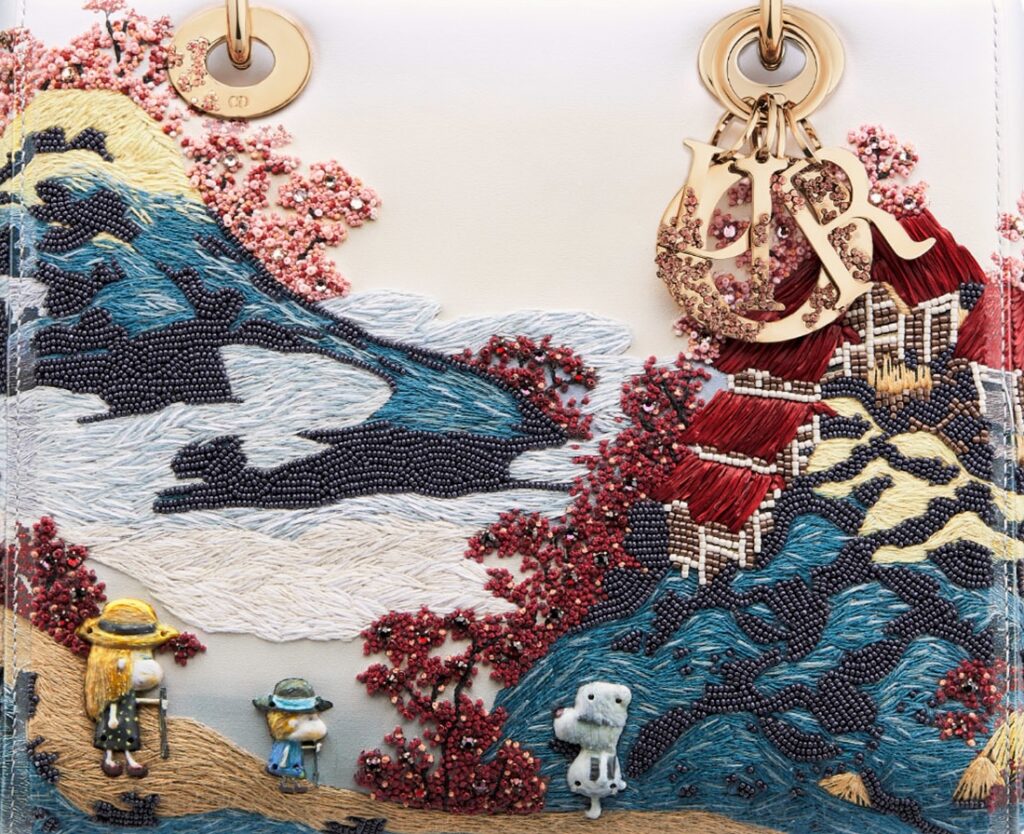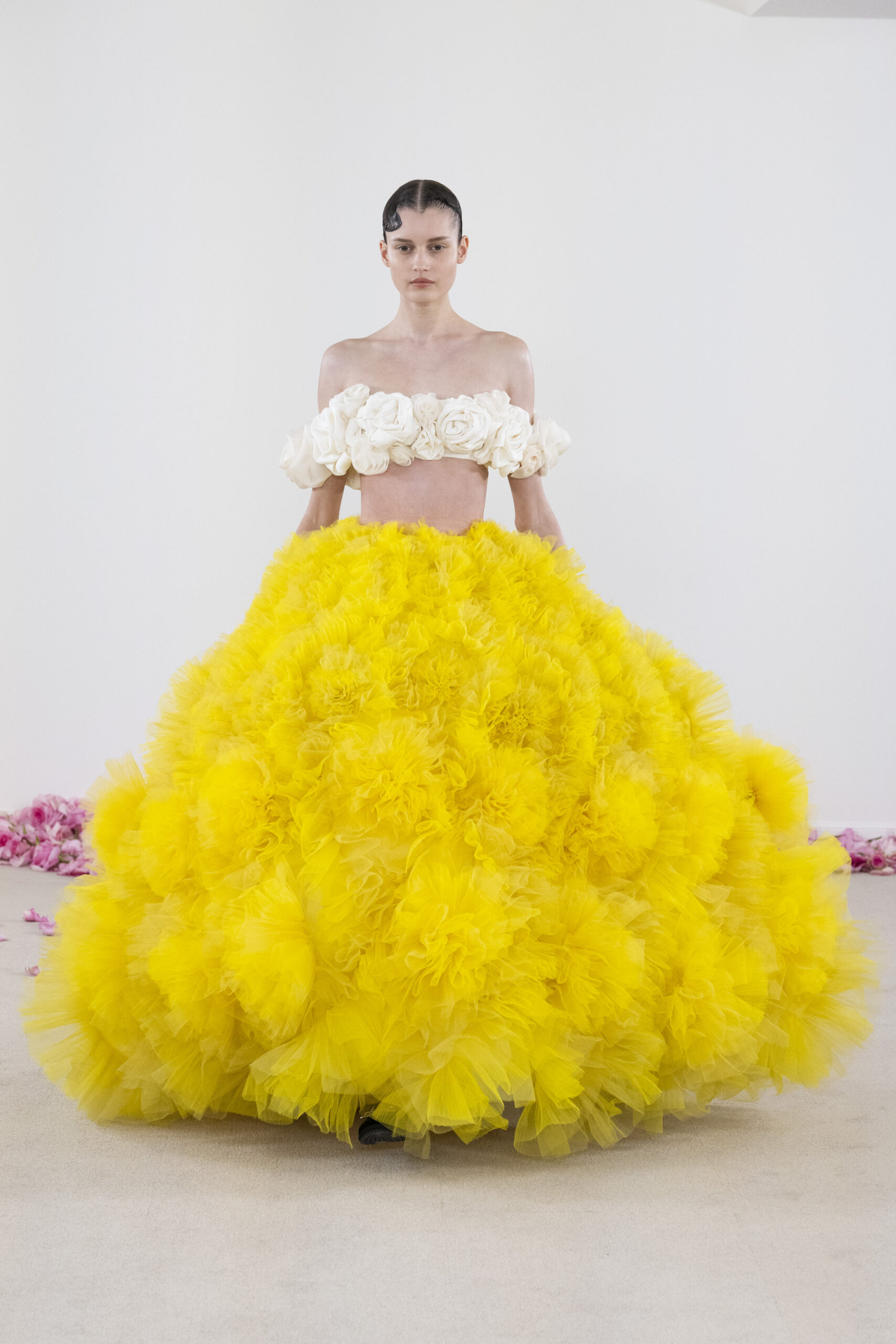
Story by Editor-at-Large CAROLINA OGLIARO
As AI-generated fashion floods the digital space, a quiet rebellion is unfolding, one that honors imperfection, touch, and the irreplaceable magic of human craftsmanship.
In a world increasingly shaped by artificial intelligence, where creativity is rendered in pixels and perfection is programmable, something unexpected is happening in fashion: the hand is making a comeback.
Call it Post-Digital Craft, a movement defined not by nostalgia, but by a craving for tactility, authenticity, and time. As algorithms generate garments in seconds and avatars walk digital runways, the most radical act in 2025 might just be a stitch sewn by hand.
This isn’t an anti-tech manifesto. Fashion, after all, has always evolved alongside innovation. But at this moment, oversaturated with fast content and virtual experiences, designers are turning back to techniques that take time, patience, and above all, human presence.
Threads That Remember
Embroidery, once considered ornamental or old-fashioned, has emerged as a language of rebellion. On recent runways, designers embraced intricate detailing that couldn’t be replicated by software. Dior’s haute couture show revealed gowns adorned with thousands of hand-sewn motifs inspired by ancient textiles. Loewe layered raw-edged fabrics with hand-crocheted panels, each piece whispering of its maker’s presence. Even at emerging labels, one-of-one pieces replaced mass-produced drops, each garment a tactile record of labor, not a file to be downloaded.
There’s something sacred in it. In an age where designs can be generated in milliseconds, taking hours to embroider a sleeve becomes a form of resistance. Time, once a luxury, is now a protest.
The Aura of the Handmade
Walter Benjamin once wrote of the “aura”, the irreproducible presence of original artwork. In fashion, that aura lives in the uneven stitch, the irregular weave, and the perfectly imperfect shape molded by a human hand. It’s the difference between an image and an object, between content and creation.
This shift is not about nostalgia for the past. It’s about re-injecting the soul into clothing. In a cultural moment where we are inundated by generated content, handmade fashion feels like a pause, an intimate conversation between maker and wearer. It’s not about quantity. It’s about connection.
Craft as Counterculture
In a landscape driven by speed, craft is slowness. In a system obsessed with scale, it’s small-batch. And in a world favoring surface-level simulation, it’s depth.
Post-Digital Craft signals a deeper change: the collapse of novelty as value. We no longer seek newness for its own sake, we seek meaning. A jacket hand-embroidered with fragments of poetry carries more than a trend. It carries the story. A bag woven from natural fibers by local artisans carries not only beauty but ethics.
This return to handwork intersects with sustainability but also surpasses it. It’s not just about what is environmentally sound, it’s about what is spiritually sound. What restores; what honors.
The Future Wears a Fingerprint
The paradox of our time is that the more advanced our technology becomes, the more we yearn for what it cannot replicate: emotion, memory, time, imperfection. Post-Digital Craft is not regression, it’s recalibration. It’s fashion remembering that the hand was never obsolete—only overlooked.
In the years ahead, as AI deepens its role in fashion, curating looks, designing prints, and even forecasting trends, human hands will become even more valuable. Not in opposition to machines, but as the heartbeat within them. Because no algorithm can trace the uneven rhythm of a soul threading a needle at midnight. No render can replace the warmth of something made just for you.
Post-Digital Craft isn’t a trend. It’s a return. A reconnection. A reminder that in a future shaped by code, touch will remain the most powerful signature of all.





